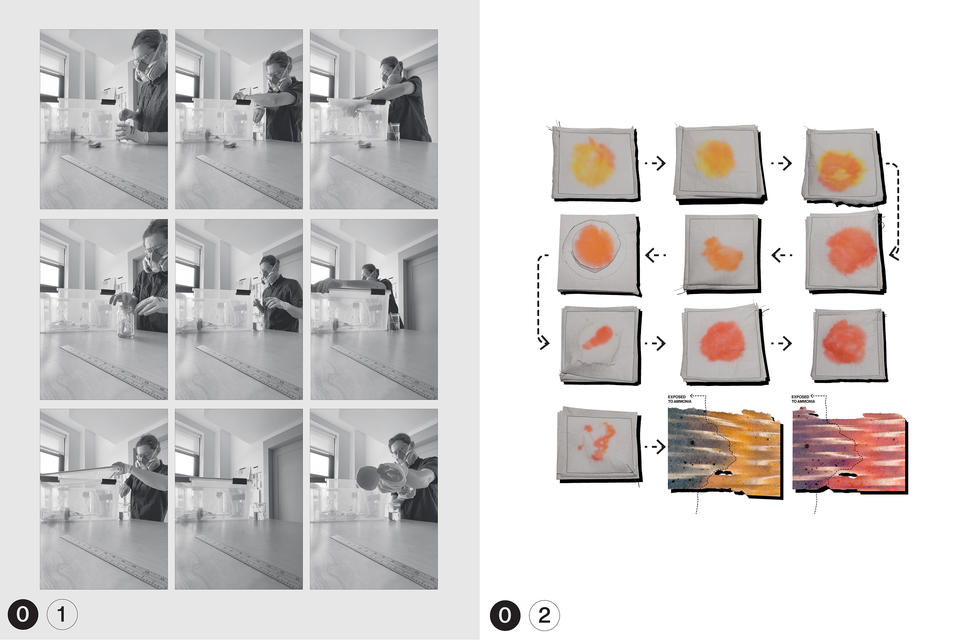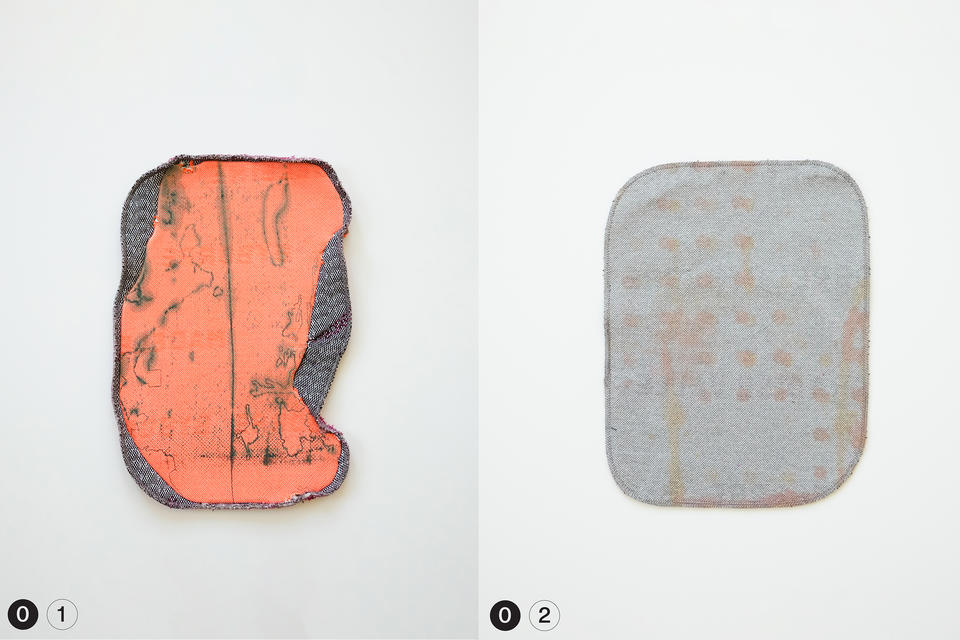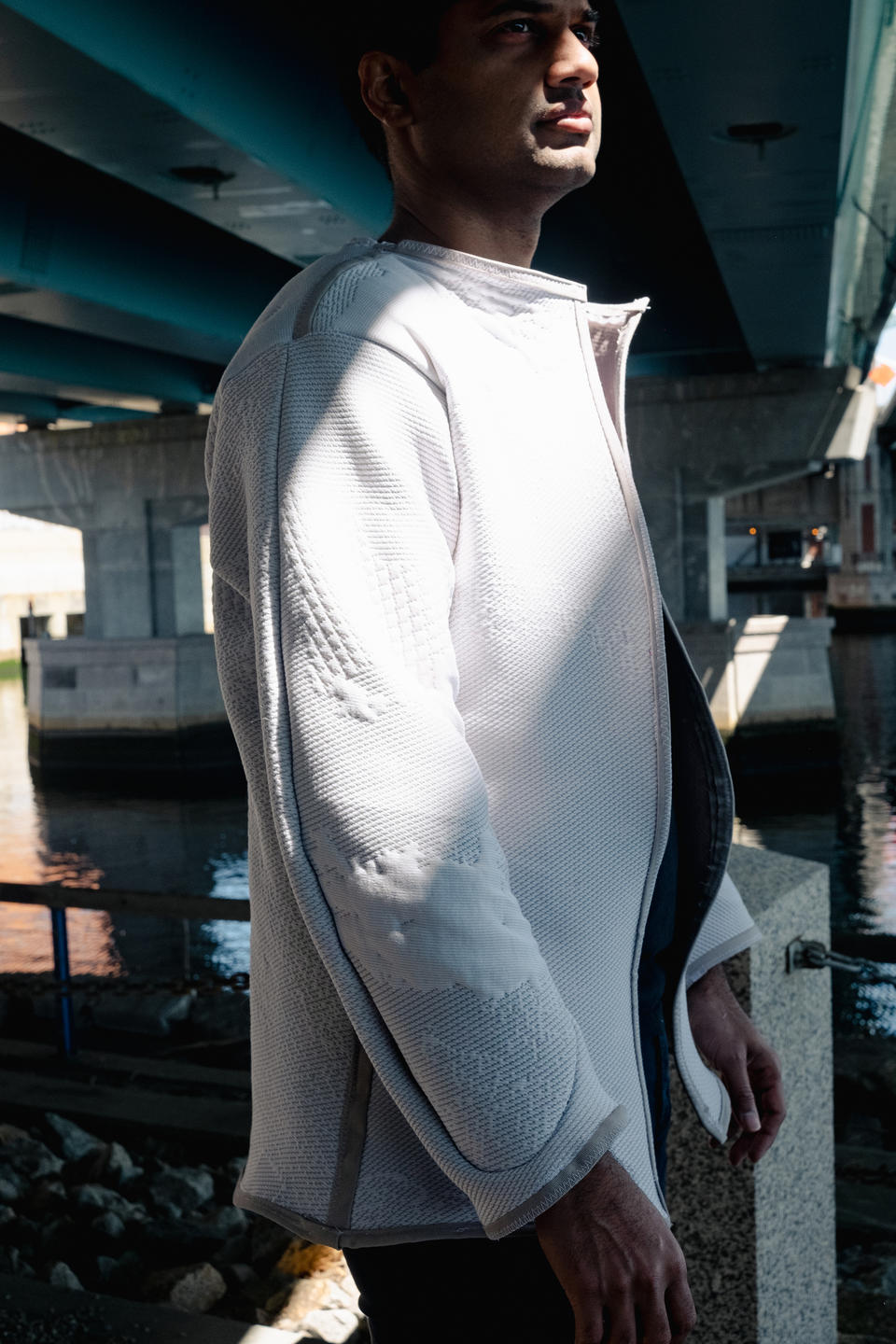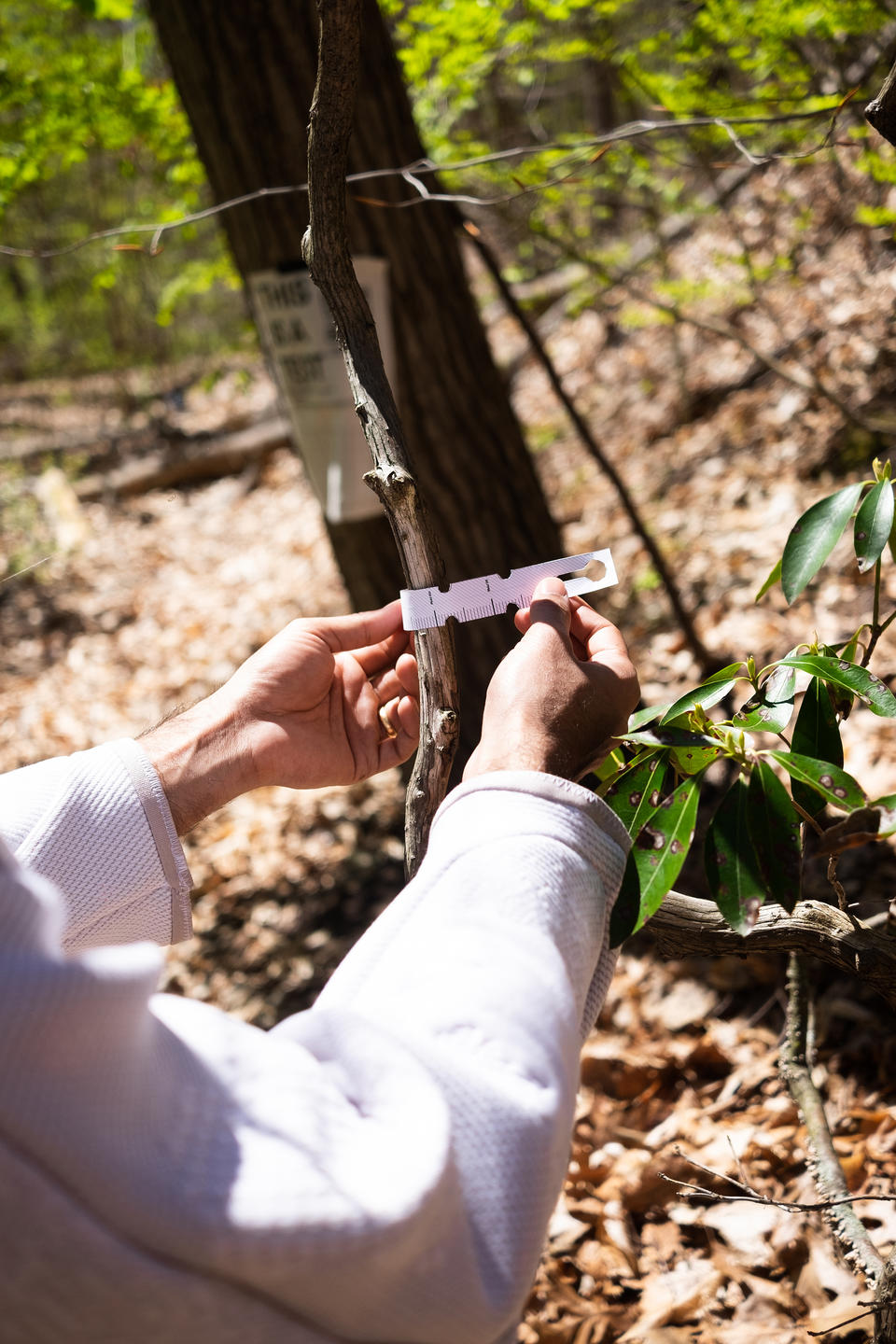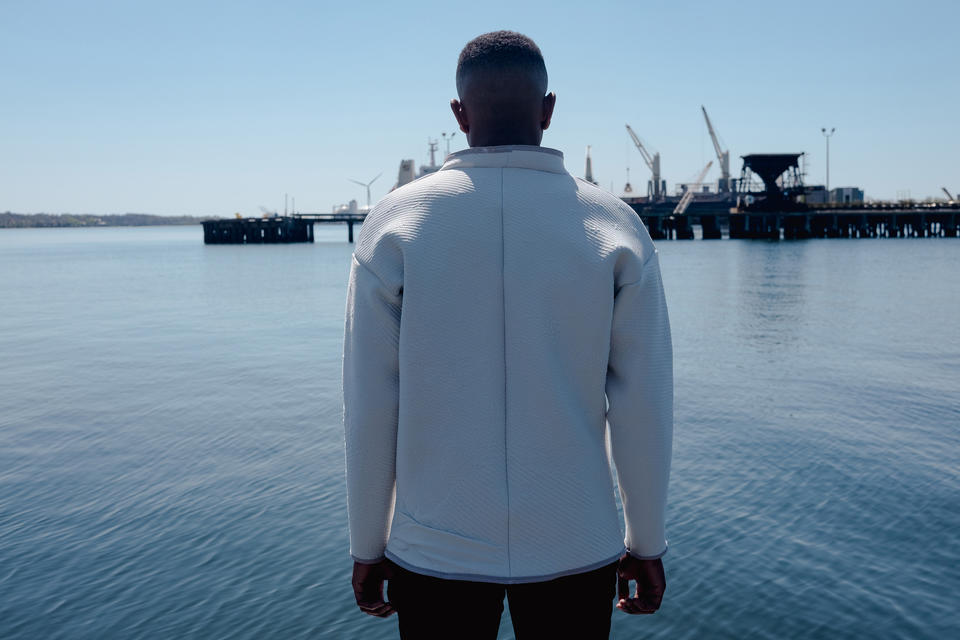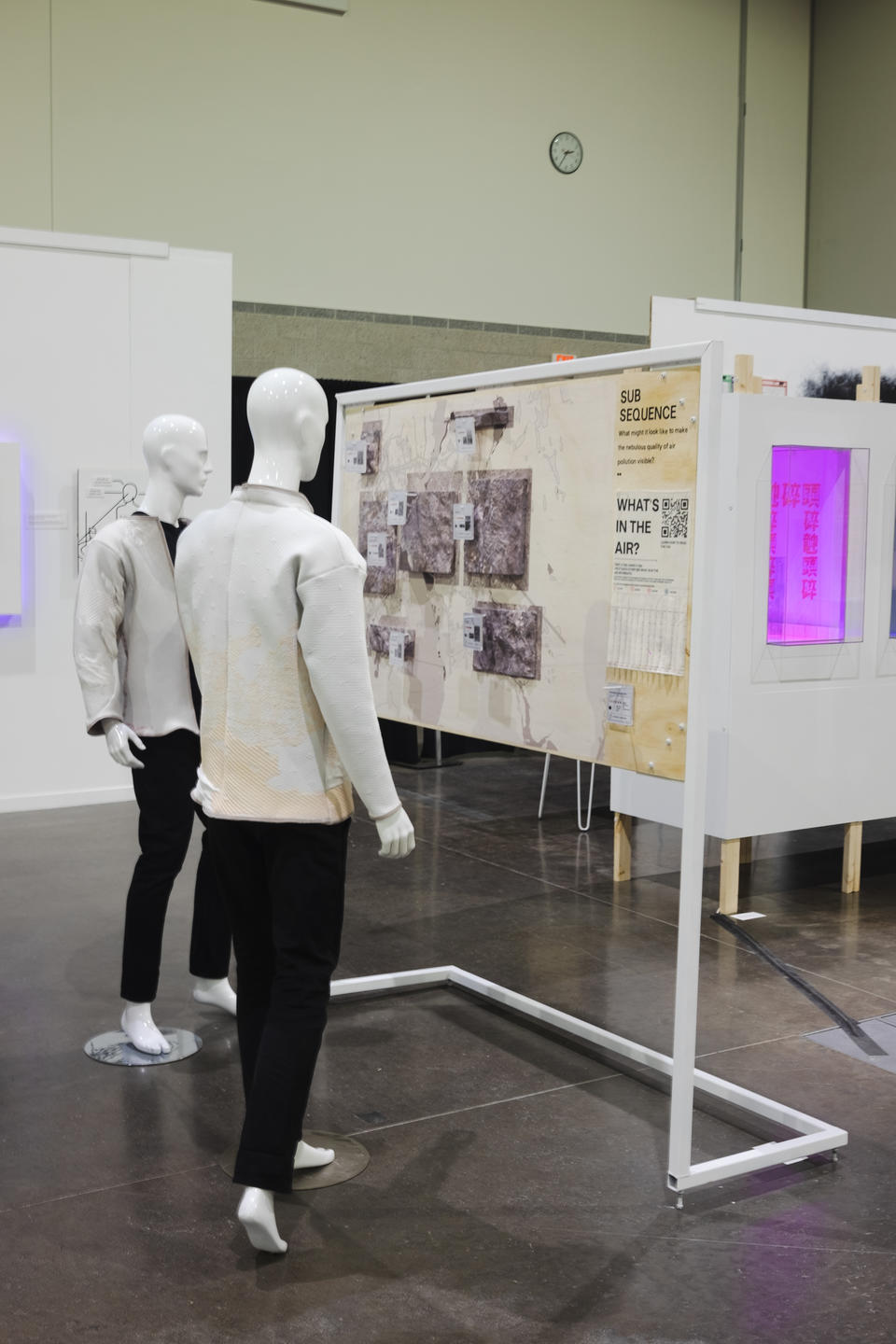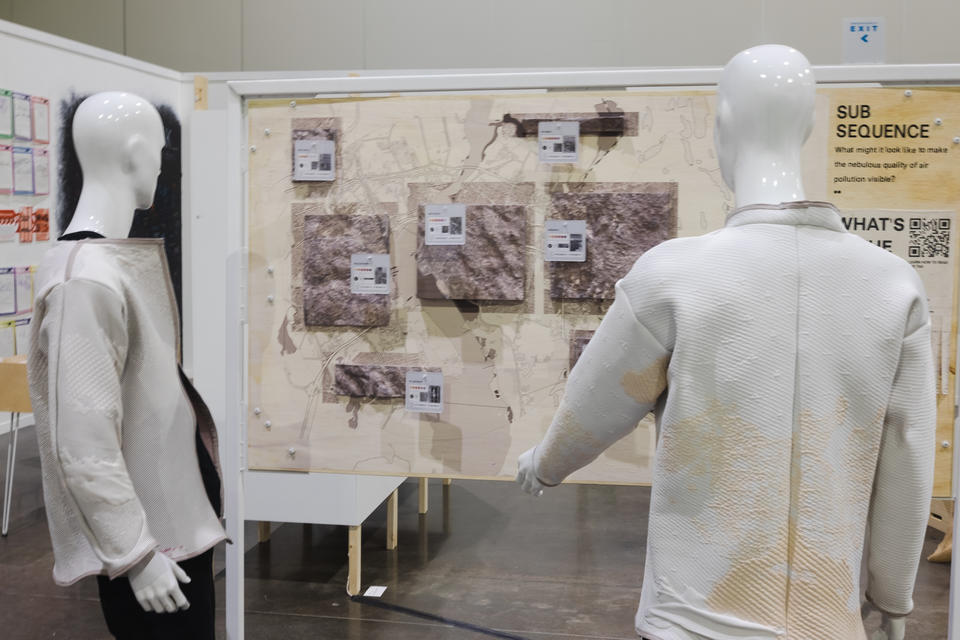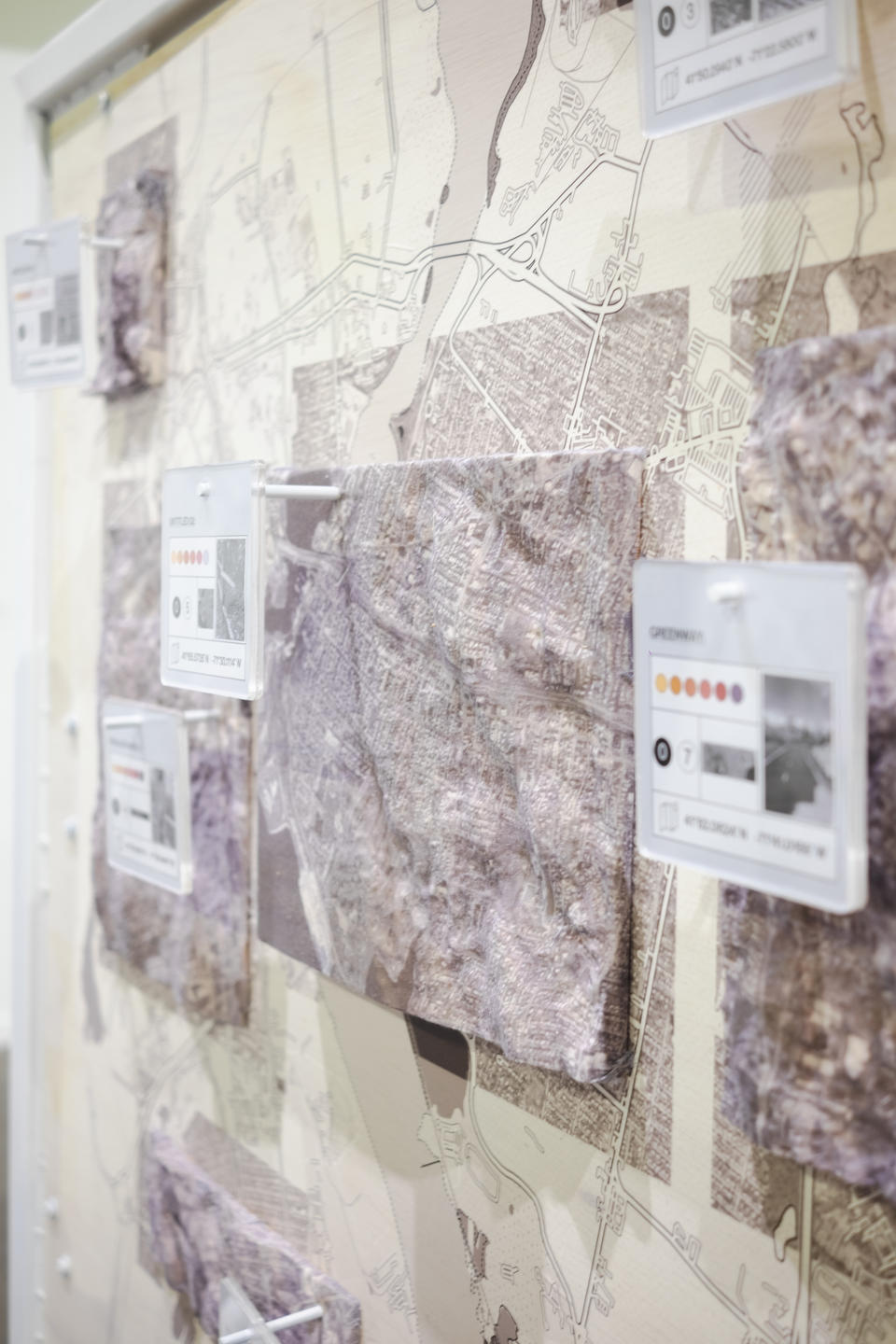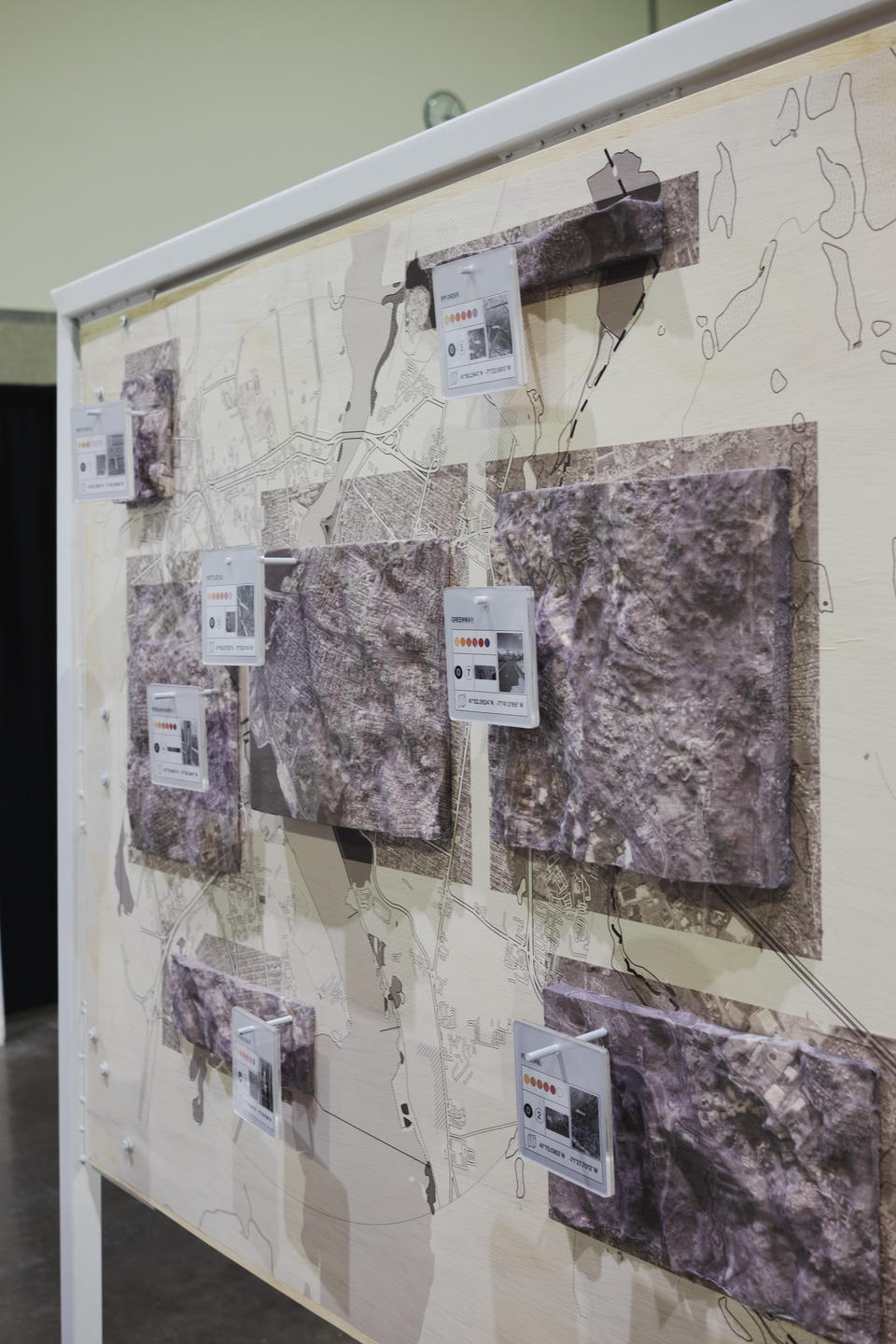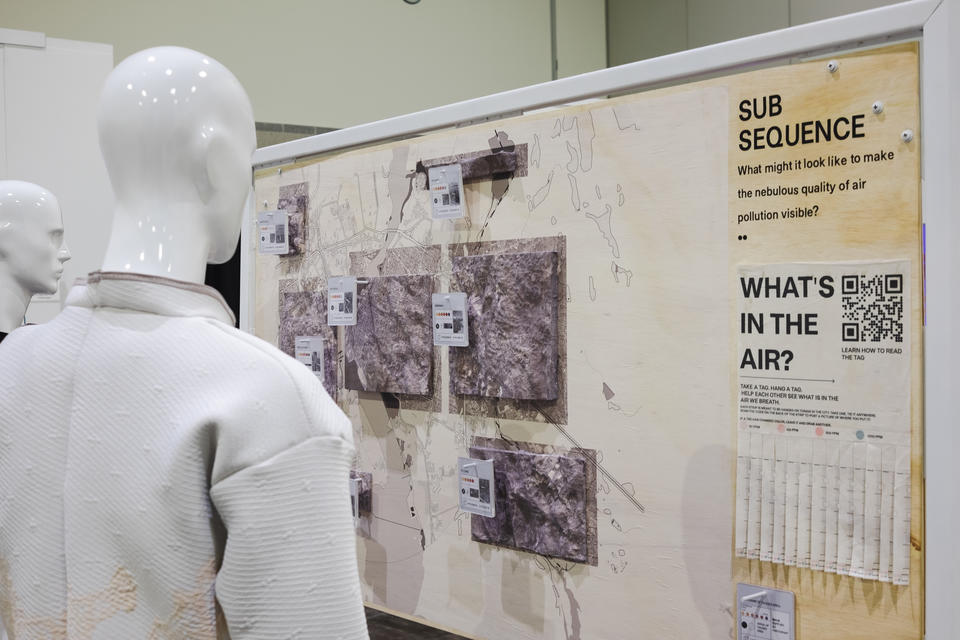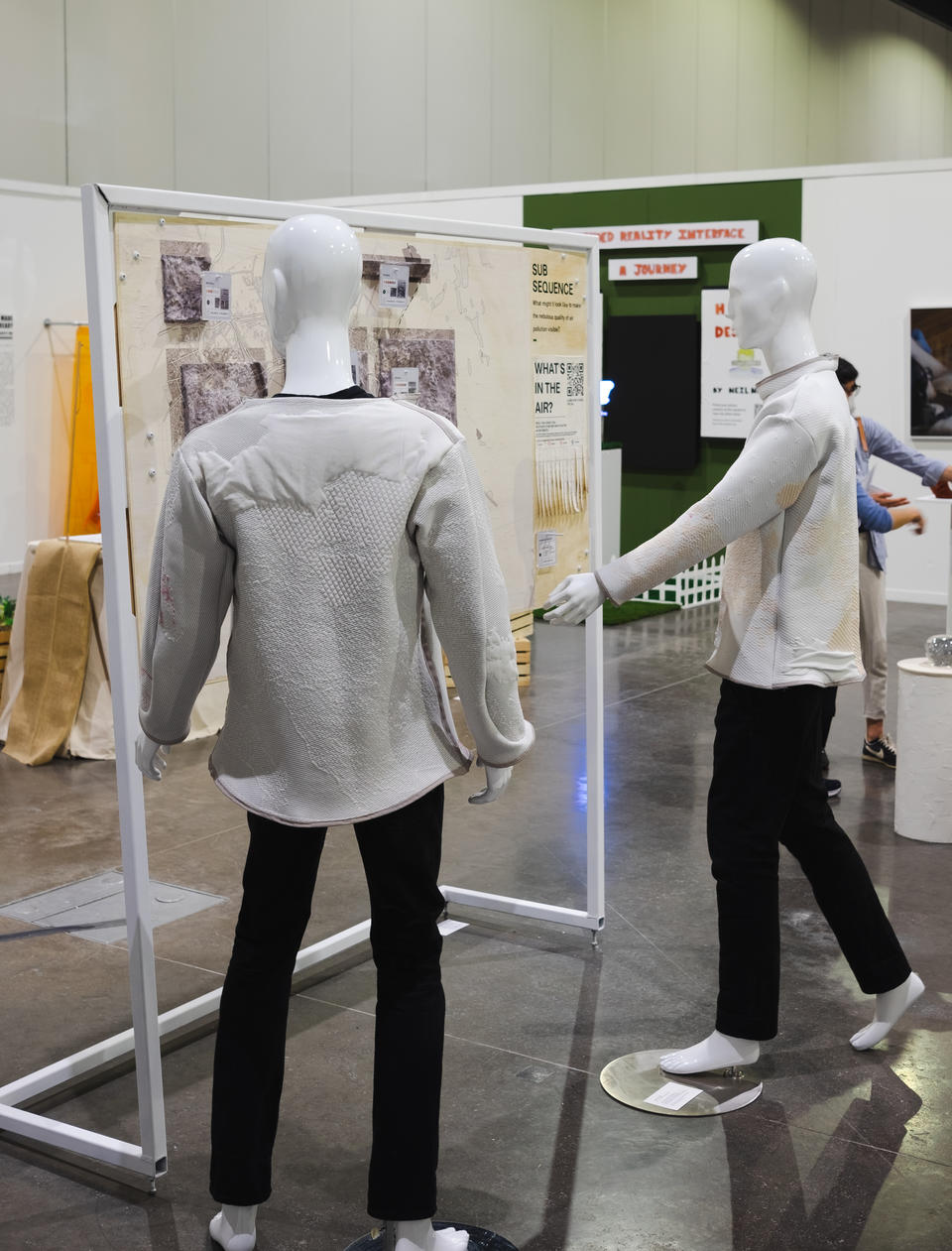Aaron Wright
Sub Sequence
Building a Participatory Infrastructure;
The thesis sets out to investigate, question, and iterate upon the possibilities of collective environmental action and accessible information through an individual’s sensing practice.
What are non-centralized, human-specific methods of sensing our immediate environment?
The work aims to redefine the sensing practice in daily routine and map the contamination zones of their community.
Simultaneously, the thesis is testing how making illegible ecosystems legible to the observer may result in a shift in one’s perception about one’s environment, generate participatory infrastructures, and, ultimately, cultivate a deeper con- nection to one’s community.
Image

The Discreet Human
2022
An inciting incidence, or recognizing the condition of nebulous pollution affecting one’s body, leaves a concerned party with feelings of distrust about their surrounding environment, as well as feelings of despondency, like there is nothing they can do about it. How can we make our invisible ecosystems visible?
Image
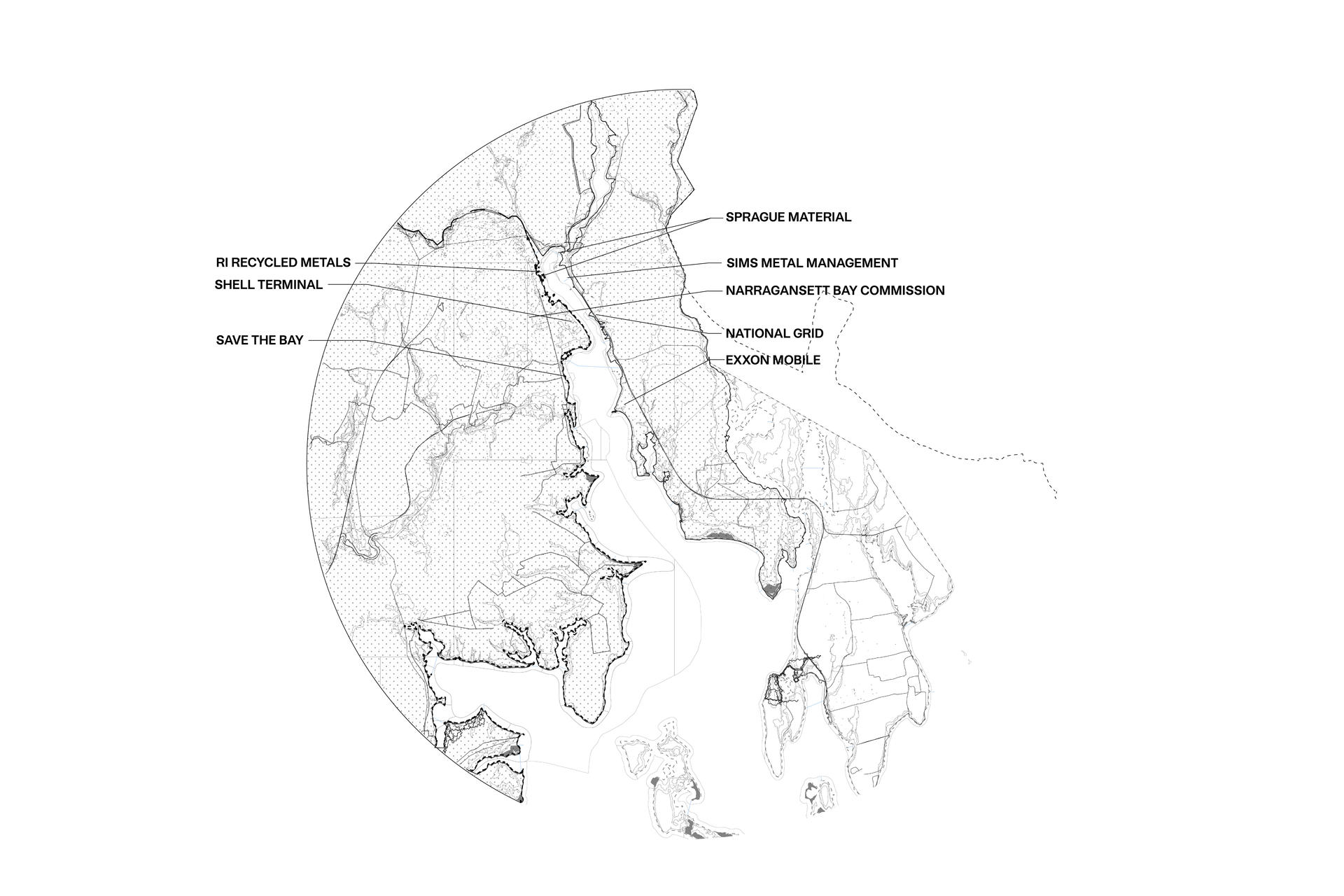
The Port of Providence
2021
Currently, benzene, black carbon, 1,3 butadiene, and ammonia are not being actively monitored by the Rhode Island Department of Environmental Management, and have no federal air quality standard. Meaning, no limit on emissions, or consequences for emitters.
Image
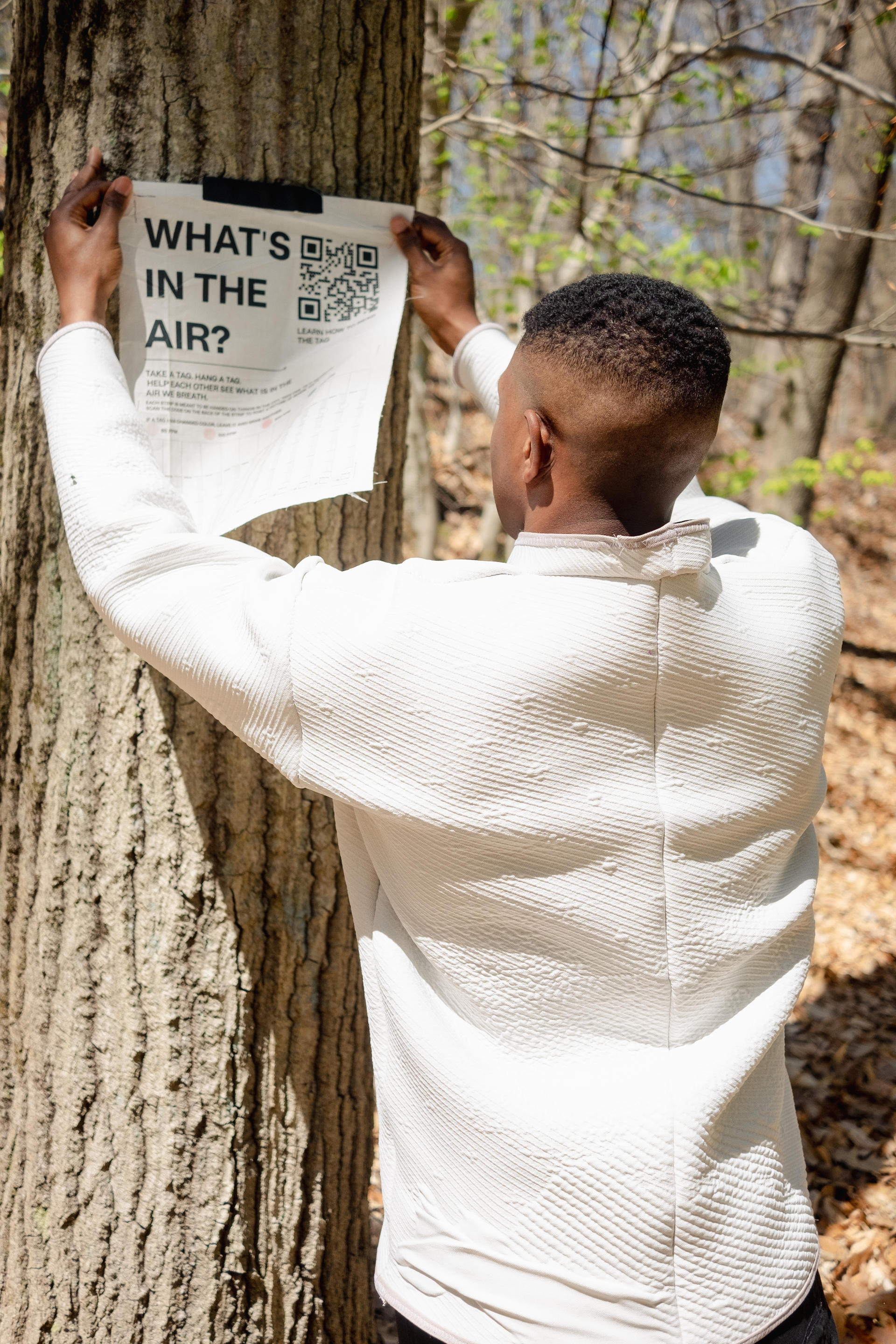
The Lowest Ask; Creating an Air-Quality Sensor
2022
Over 130 tags have been posted. The process: I have applied phase-changing pigment, suspended in silicon onto each tag. The QR code takes a user to a form where they can answer a question about the area they’ve hung a tag and post a picture.
Image
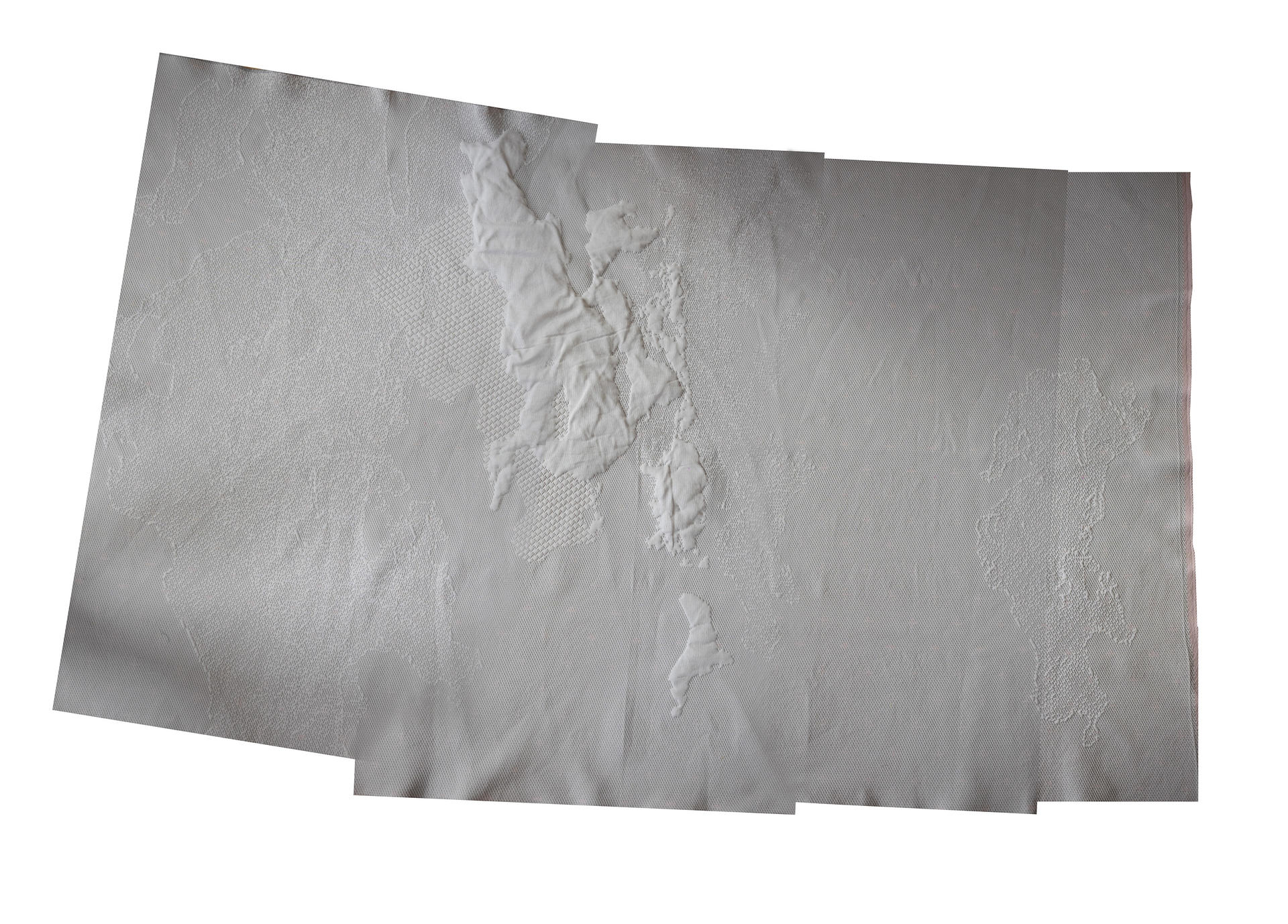
Digital embroidery, machine knitting, textile
70" x 40"
2022
Image
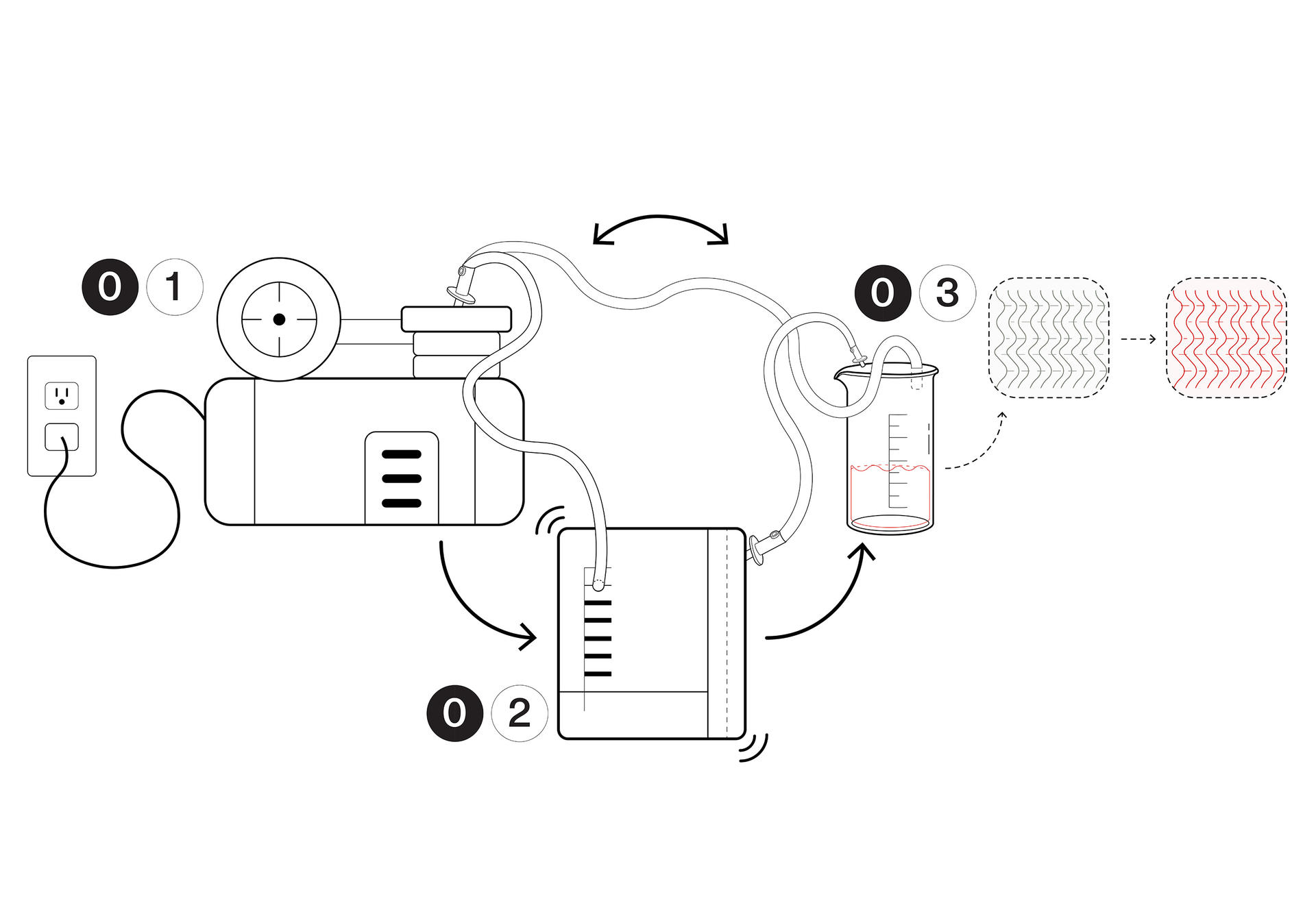
A Constructed Vapor Chamber; A Feedback Loop
2022
01: A fish-tank air pump (deconstructed) 02: A humidifier (deconstructed) 03: A sealed container for material tests (constructed) Constructing a vapor chamber out of found parts to explore phase-changing dyes that react to ammonia in a gaseous state.
- Architecture
- Ceramics
- Design Engineering
- Digital + Media
- Furniture Design
- Global Arts and Cultures
- Glass
- Graphic Design
- Industrial Design
- Interior Architecture
- Jewelry + Metalsmithing
- Landscape Architecture
- Nature-Culture-Sustainability Studies
- Painting
- Photography
- Printmaking
- Sculpture
- TLAD
- Textiles
